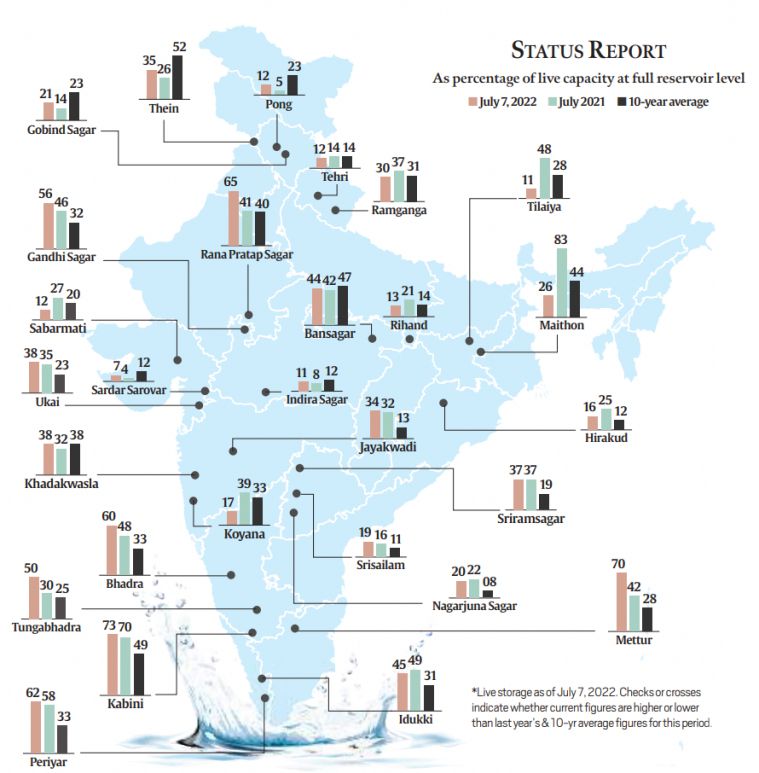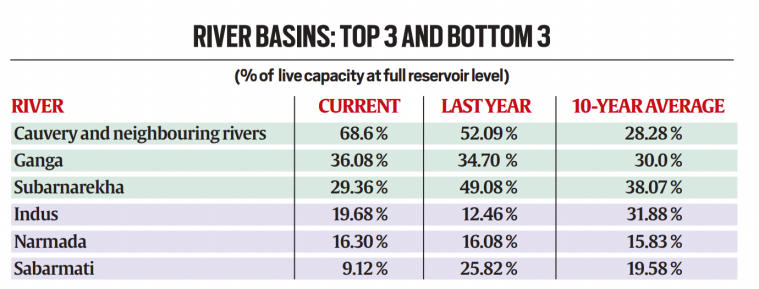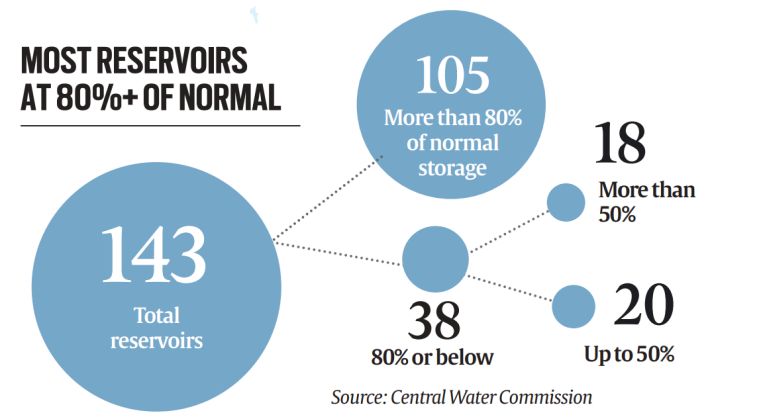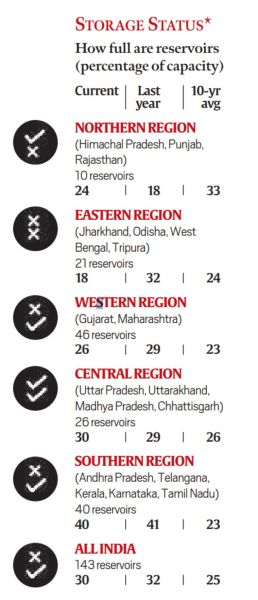Explained: Healthy stock in reservoirs
March and April were relatively dry, but surplus rainfall from the northeast monsoon of 2021 have kept CWC's reservoirs well-stocked. With the southwest monsoon picking up, stocks are set to rise further.
 A view of the Narmada dam. (Express Photo: Bhupendra Rana, File)
A view of the Narmada dam. (Express Photo: Bhupendra Rana, File)Despite a poor pre-monsoon season, especially during March and April when the all-India rainfall was 32% short of normal, reservoirs in the country have accumulated reasonably healthy stock overall in July so far. This is because surplus rainfall during the northeast monsoon of 2021 kept stocks replenished through the summer of 2022.
The Central Water Commission (CWC) monitors the water status of 143 reservoirs. As on July 7, the collective stock was 53.649 billion cubic metres (BCM), compared to 56.253 BCM at the same time last year. In other words, the present stock amounts to 95% of the live storage available this time last year. And in half these reservoirs, the water stock is higher than it was in July last year.
 Live storage as of July 7
Live storage as of July 7
Region by region
Ten dams in the Northern Region — in Himachal Pradesh, Punjab and Rajasthan — have 24% of their total live storage capacity, or 4.79 BCM. At this time last year, the stock was 18%. For comparison, the ten-year average is 33% of the live storage capacity in these 10 reservoirs.
In the 21 reservoirs of the Eastern Region (Jharkhand, Odisha, West Bengal, Tripura, Nagaland and Bihar), whose total live storage capacity is 20.09 BCM, the available live storage on July 7 was 3.66 BCM (18%) — less than in July 2021 (32%) and less than the ten-year average (24%).
 River basins: Top 3 and bottom 3
River basins: Top 3 and bottom 3
In the Western Region (Gujarat and Maharashtra), which have 46 reservoirs monitored by the CWC, the current storage is at 26% of total ive capacity (9.36 BCM available out of 36.41 BCM total capacity), which is less than the 29% of July 2021.
In the Central Region (Uttar Pradesh, Uttarakhand, Madhya Pradesh and Chhattisgarh), the 26 reservoirs together have 14.57 BCM or 30% of the total live storage capacity, which is higher than in July 2021 and the ten-year average of 26%.
The Southern Region (Andhra Pradesh, Telangana, Kerala, Tamil Nadu and Karnataka) has 40 reservoirs. Their combined stock is 40% of their total live storage capacity, compared to 41% in July last year, but much higher than the ten-year average of 23%.
 Most reservoirs at 80% of normal
Most reservoirs at 80% of normal
Forecast

With the southwest monsoon in the active phase since June 30, and widespread rainfall forecast during the next five days over most regions of the country, reservoir stocks are set to get further replenished. In the last one week itself, many dams in Kerala, Karnataka, Maharashtra have seen their stocks rise significantly.
Southwest monsoon rainfall has been below normal so far from East Uttar Pradesh (–48%), Gangetic West Bengal (–46%), Jharkhand (–43%), Kerala (–35%), Madhya Maharashtra (–24%), Odisha (–22%), Gujarat (–21%). Good rain spells will need to continue to make up for deficit stocks in dams along some of these states such as Maharashtra, Gujarat, Uttar Pradesh and West Bengal. On the other hand, larger states like Madhya Pradesh, Andhra Pradesh, Tamil Nadu, Rajasthan, as well as Himachal Pradesh, Punjab, Nagaland, have better stocks than last year.
- 01
- 02
- 03
- 04
- 05






































